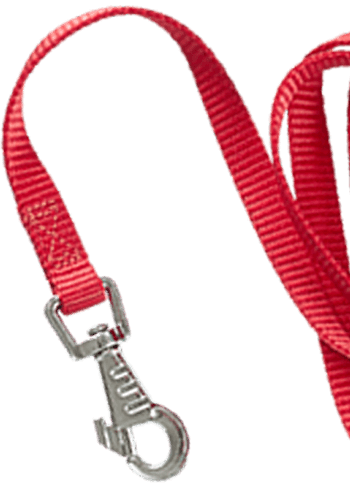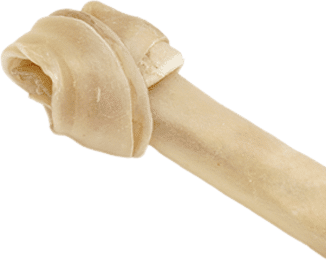


Did you know that 3 out of 10 Americans have some type of allergy or allergic reaction to dogs?
You read that right: America’s favorite pet makes up for 30% of people’s allergies. Even so, this hasn’t stopped them from choosing Labs over other breeds. Fortunately, dog lovers who experience allergic reactions can take steps to minimize their allergies around dogs by choosing certain “hypoallergenic” breeds.
In this article, you’ll learn about what a hypoallergenic dog is, how allergies affect people, and what types of breeds might be ideal if you’re looking to adopt.
If you have allergies, you aren’t actually allergic to pet hair. Pet allergies are caused by the allergens that collect on loose hair and dander.
Dogs labeled as “hypoallergenic” shed much less than other dogs (or don’t shed at all). Less shedding means less dander released into the air, floor, or furniture, and so it’s less likely to irritate existing allergies.
It’s important to know that there is no such thing as a completely hypoallergenic dog breed. All dogs have some level of hair and skin dander, even if it’s at a microscopic level. A hypoallergenic dog is less likely to trigger an allergic reaction.
So it really depends on your allergy sensitivity. The truth is, even hypoallergenic breeds still may not work for you.
Unfortunately, pet hair is what makes it hard for those with allergies to live alongside dogs. Once hair is shed, allergens can stay in the air and on furniture for years. When a person with allergies encounters this dander, it’s likely to irritate their eyes, nose, and throat.
But humans have been living alongside dogs for thousands of years — so why are some people allergic to dogs more than others?
It all comes down to the person’s specific immune system, which fights against foreign substances. A typical immune system has no problem filtering out dander and allergens, even when dogs shed a lot. However, those with sensitive immune systems react to proteins in a pet’s urine, saliva, and dander.
There are several symptoms of pet allergies, including:
If you experience any of these symptoms when you’re around pets, then you should go see your primary care physician immediately. Although pet-related allergies can’t be completely cured, your doctor can help treat them so that they’re more manageable for when you’re around pet dander.
Labradors are America’s favorite dog — so if you’re one of the thousands that are thinking about bringing one into your household, you might have wondered: “Are Labradors hypoallergenic?” or “Are Labradors good for people with allergies?”
Unfortunately, labradors shed their coats frequently, which means that they’re not hypoallergenic. Since allergens collect on pet dander, it’s nearly unavoidable for a person with pet allergies to live peacefully with a pet who sheds a lot.
Although nearly all dogs shed to some extent, labradors shed heavily at two points of the year: spring and fall. When the weather begins to warm up, labs shed their dense winter coat better to accommodate the hot temperatures during spring and summer.
Later, when it starts to get cold, labradors will bulk on their winter coat to stay warm during even freezing temperatures. And, in between these months, labs also require frequent brushing and grooming.
Every labrador owner is familiar with the amount of shedding that comes with owning one — so much that it might lead to the temptation to shave your labrador.
(It’s important to know that shaving your lab’s coat could actually be very dangerous to his health since the hair follicles in the double coat won’t grow back properly.)
Luckily, there are other ways to control your lab’s shedding so that there’s less dander floating around the house.
You only have to bathe your labrador with lukewarm water every month or two. However, bathing your labrador more frequently during the shedding seasons will help wash out dander, loose hairs, and allergens.
Combined with shampoo and regular brushing, lukewarm baths are the best way to reduce the amount of labrador shedding and allergens in your house.
Sometimes dogs shed excessively when their dietary needs aren’t being met. Try to become familiar with the top few ingredients in your lab’s food and be able to identify whole ingredients, like meat and vegetables.
Plus, ensuring that your labrador is getting enough vitamins, minerals, and nutrients can help guarantee a healthy coat. Using a good supplement may also help keep your lab’s coat healthy.
If you have to choose between vacuuming the house several times and brushing your lab’s coat daily, you’d probably pick brushing.
And that’s a good thing, too: Labs benefit from daily brushing to help keep their hair neat, healthy, and free of debris. Plus, routine brushing reduces the need to vacuum frequently.
While there are no 100% hypoallergenic dogs, many breeds do well with those who have allergic reactions to fur.
Finding a hypoallergenic dog starts with plenty of research. However, the main takeaway is to stick to dog breeds that don’t shed very much so they’re less likely to produce allergens.
Here are some popular dog breeds and sub-breeds that are perfect for any allergy sufferer.
Because of their coarse, wire-like fur, terriers make excellent breeds for those who suffer from allergies. Not all terriers (like Jack Russell terriers) are hypoallergenic, so here are some sub-breed terriers that are less likely to cause allergies:
Schnauzers come in all shapes and sizes, and any of them make an excellent hypoallergenic pet. Schnauzers hardly shed because they have constantly growing hair. The only grooming they require is baths, brushing, and haircuts.
If you’re considering a schnauzer for your hypoallergenic household, then check out these sub-breeds:
Poodles may look like they’re all about their thick and curly coat, but they’re actually excellent dogs for first-time owners with allergies. Because of their non-shedding fur, this breed of dog is ideal for allergy sufferers. Instead, poodles grow hair consistently and require frequent grooming, like haircuts.
If you’re interested in adding a poodle to your home, check out these breeds:
Although limited, there are a few hairless breeds in the United States that provide less hair than other hypoallergenic dogs. However, it’s essential to keep in mind that hairless dogs don’t mean that you won’t have an allergic reaction at all since allergies can be triggered by dander and saliva.
For those who want to minimize their chances of allergies around dogs, it might be a good choice to check out hairless breeds, such as:
A lab makes a wonderful pet — so when allergy-sufferers are looking to add one to their families, it’s good to ask, “Are labradors hypoallergenic?”
If you suffer from pet-related allergies, then adopting a Labrador Retriever might not be a good idea. Because of their thick, double coat and consistent shedding habits, these dogs produce allergens that may trigger a reaction.
Even if a lab is not the right choice for you, you don’t have to lose all hope: Depending on how severe your allergies are, you can still own a dog without issue if you choose to adopt a hypoallergenic breed. Although hypoallergenic means a dog still carries some amount of hair, your allergic reaction to the dander will be less severe or frequent. Better yet, your allergies may not even appear at all.